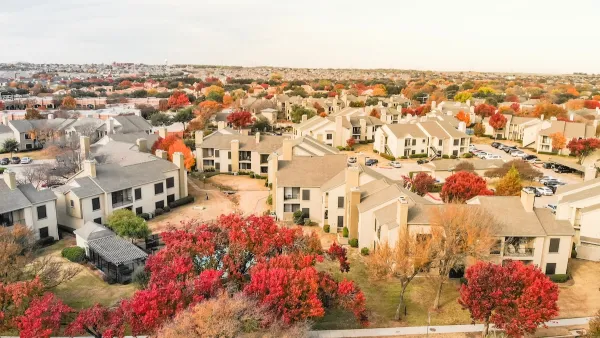Since the September 11 attacks, the areas in and surrounding Lower Manhattan have experienced an increase in the population of young, educated workers, reports Sam Roberts. Farther-off suburbs are seeing their share of such high-value workers shrink.
"After suffering through a loss of jobs and residents in the aftermath of the Sept. 11 attacks," writes Roberts, "Lower Manhattan has undergone a renaissance." According to the Census Bureau, the population within a two-mile radius of City Hall has increased by nearly 40,000 people in the past decade. A separate analysis by the Downtown Alliance found, "[t]oday, Lower Manhattan is surrounded by communities that have an increasing share of the region's high-value workers."
Lower Manhattan has grown "in part as a result of incentives, including subsidies and mass transit improvements, intended to spur a rebound after Sept. 11," notes Roberts. Within a 30–minute commute of downtown, the biggest population gains have happened in the Newport-Grove Street-Jersey City Heights area on the New Jersey waterfront and in Williamsburg and Greenpoint in Brooklyn. Many parents are choosing to raise their families closer to the city as opposed to the suburbs, citing diverse communities and shorter commutes as benefits.
The Downtown Alliance found that the number of "college-educated people between 18 and 44 living within a 30-minute commute of Lower Manhattan" increased by more than 172,000 people between 2000 and 2010. "If these growth trends continue," the Downtown Alliance analysis said, "it will not be long before the young, educated population of areas surrounding Lower Manhattan outranks that found in all of Long Island; Hudson Valley, N.Y.; and southern Connecticut combined."
FULL STORY: In and Around Lower Manhattan, Population Growth Since 9/11

Planetizen Federal Action Tracker
A weekly monitor of how Trump’s orders and actions are impacting planners and planning in America.

Maui's Vacation Rental Debate Turns Ugly
Verbal attacks, misinformation campaigns and fistfights plague a high-stakes debate to convert thousands of vacation rentals into long-term housing.

Restaurant Patios Were a Pandemic Win — Why Were They so Hard to Keep?
Social distancing requirements and changes in travel patterns prompted cities to pilot new uses for street and sidewalk space. Then it got complicated.

In California Battle of Housing vs. Environment, Housing Just Won
A new state law significantly limits the power of CEQA, an environmental review law that served as a powerful tool for blocking new development.

Boulder Eliminates Parking Minimums Citywide
Officials estimate the cost of building a single underground parking space at up to $100,000.

Orange County, Florida Adopts Largest US “Sprawl Repair” Code
The ‘Orange Code’ seeks to rectify decades of sprawl-inducing, car-oriented development.
Urban Design for Planners 1: Software Tools
This six-course series explores essential urban design concepts using open source software and equips planners with the tools they need to participate fully in the urban design process.
Planning for Universal Design
Learn the tools for implementing Universal Design in planning regulations.
Heyer Gruel & Associates PA
JM Goldson LLC
Custer County Colorado
City of Camden Redevelopment Agency
City of Astoria
Transportation Research & Education Center (TREC) at Portland State University
Jefferson Parish Government
Camden Redevelopment Agency
City of Claremont




























